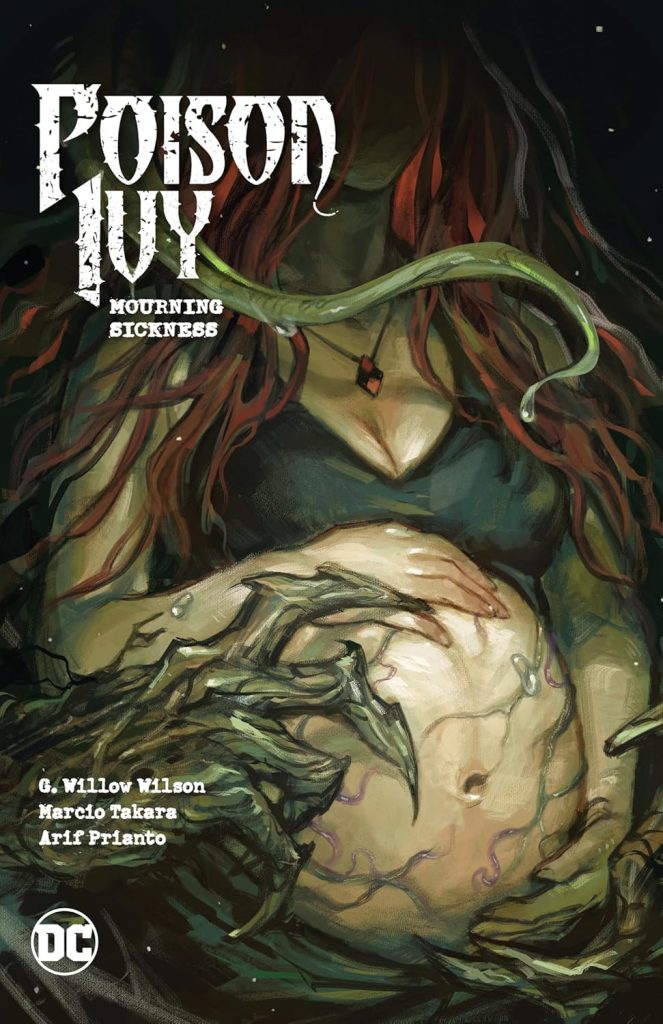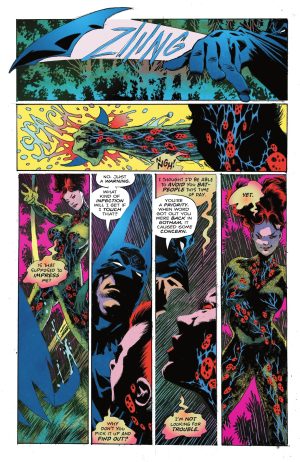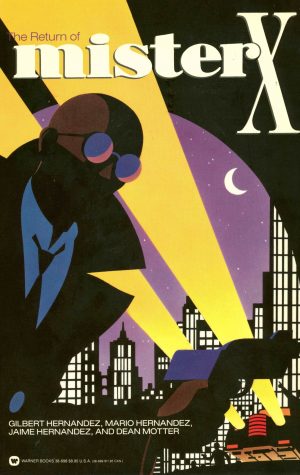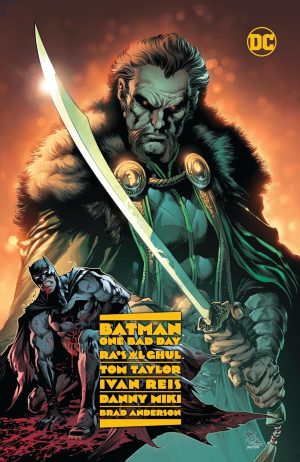Review by Frank Plowright
After a spell travelling and sorting out polluters with little concern for the planet, Poison Ivy has decided it’s time to return to Gotham where there could be problems as she hardly left on good terms.
Rather than focussing entirely on that thread G. Willow Wilson gives it due consideration, but moves on rapidly to the ecological matters on which the series has been based. A lot of construction is going on in Gotham, and one particular project draws Ivy’s attention. Her instincts prove true in revealing there’s something fishy, but even given Gotham as a magnet for the strange and disturbing doesn’t prepare Ivy or readers for what she encounters. One part of it is psychotic architecture. That should be indication enough that Wilson’s not settling on her laurels by feeding in the usual Gotham fare, although Batman does appear in passing.
The art has always been distinctive, and the combination of Marcio Takara and colour artist Arif Prianto produce ever more decorative and imaginative pages. On the final chapters Luana Vecchio also shines, but her style is more posed and considered, and has a greater dependency on telling a story via close-ups on faces. It’s technically good drawing, but nowhere near as creative as the earlier pages.
As has been the case from the beginning, Wilson writes smart stories about Poison Ivy. There’s thought about what she’s capable of, and how her personality acts on that. It’s apparent when it comes to the solution to the problem of the corrupted building, and it’s present again with the second story. It’s as if another idea has occurred to Wilson about something that was the major plot in Unethical Consumption, and as it’s viable it has an airing here.
The only weakness to the series is the central relationships remaining unconvincing and transmitting more as an opportunity to have the artists draw attractive women kissing and cuddling for a male audience. That doesn’t apply to Killer Croc, added to the cast naturally enough for reasons that don’t at first appear anything other than random need for someone else extraordinary, but the importance is clear by the end, and he’s witness to the primary menace in Origin of Species.
Mourning Sickness is another smart meditation on the possibilities of botanic science given an injection of the fantastic and won’t disappoint anyone already buying into Wilson’s agenda. However the back story is becoming ever more complicated, and new readers are better advised to start with The Virtuous Cycle.





